For the past several years we have been subjected to advertising campaigns touting specific food stuffs that may or may not be useful or at least not harmful. Most are at least valuable in terms of adding variety to our diets and yes they all bring useful biologicals to the table that are welcome.
What is also pretty obvious is that actual science will matter little to an ad exec. A rumor will do. So it is high time to exercise caveat emptor.
Thus we have this item to share. At least our general skepticism was well founded and maybe we can go back to using common sense. Check my underlinings at least. It has been my nature to resist all marketing claims about food as a natural venue for bunkum and eat as close to whole foods as possible.
Superfoods are bullshit
By 10 Comments
https://www.toddcaldecott.com/superfoods-are-bullshit-part-2/
Like
many of you with an interest in natural medicine, my foray into this
field was guided by altruism, as a way to reconnect to our shared human
heritage, and the healing wisdom of the earth. It thus came somewhat of a
surprise to me, when during my training and after when I began to
practice, to see the degree to which moneyed interests controlled the
natural health industry, reducing the sophisticated and subtle
principles I had studied to a loud and obtuse marketing noise. Over the
years as I have built up my experience and knowledge, I have had some
occasion to work on the industry side of things, and although my tenure
has thankfully been brief, it was sufficient to confirm everything I
ever thought that was negative about it. This is why I generally avoid
health food products (and health food stores) like the plague: I am just
too aware of what goes on within the industry. Thus I encourage my
patients, students and anyone who will listen, to seek their nutrition
and health in wholesome food, rather than any kind of supplement.
Sieg über lebensmittel
Which brings me to “superfoods”, a term predicated on a comic-book
fantasy that some foods, like some animals, are better than others. The
concept of superfood suffers from a totalitarian perspective: like the
übermensch idealized by Hitler, it’s a kind of eugenic proposition in
which we select only the “special” foods, the ones to which all foods
should aspire. At the very least, the concept of superfoods is a
fetishization of food, confusing the basis of a healthy diet to justify
the high cost of exotic, imported foods and supplements that do not live
up to the hype. The reality is that “superfoods” are all around us, and
have already been used without much fuss by different cultures for
thousands of years. These are the foods you only eat in small
quantities, as a category of nutrition that bridges food and medicine,
such as bitter melon and shiitake mushroom, culinary herbs like turmeric
and oregano, fruits including goji and juniper berries, and roots such
as astragalus and dandelion. The properties and benefits of these
so-called “superfoods” are all well-established within their respective
cultural traditions, and to learn how to use them properly, it is
incumbent upon each of us to learn something about these traditions.
Only then will these so-called “superfoods” be placed in their proper
context.
Stepping over the cow paddies
Over the next two posts, I am going to review a number of these
so-called “superfoods” and allied supplements, and give you my
uncensored opinion. Each “superfood” is rated on my index as follows:
How did I come up with these ratings?
In each review, you will find links to provide further evidence to
support my rating, but in essence all these reviews are based on my
opinion and are thus subjective. I am not interested in the kind of
review you might find in a science-based blog, that provides cautious
and mostly empty, if not downright skeptical opinion, because in most
cases these reviews are empirically useless. As such, my reviews come
from the “wild”, based on 25 years of experience in this field as a
student and practitioner, drawing from my study and work with Ayurveda
and other healing traditions.
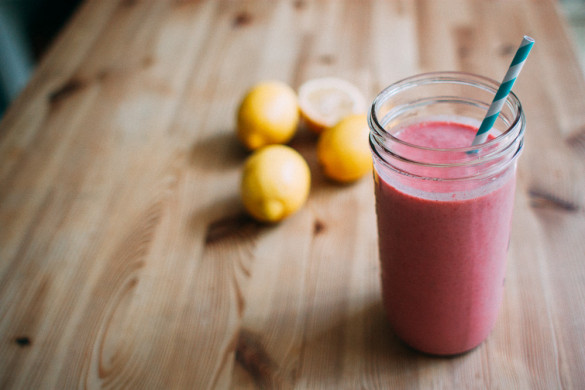
THE SMOOTHIE
WHAT IS IT? Seriously? You’d only be asking this if you’ve been living in a cave without electricity for the last 15 years.
THE CLAIM. Smoothies are a great way to “drink” your food, which
is easy on digestion, fortifying your diet with variety of “superfoods”
to optimize your health.
MY COMMENT: Smoothies are nothing more than a variant of a
milkshake, and indeed, most people’s version of a smoothie is a milk or
yogurt-based drink with fruit. The number of problems with this
proposition is another blog post in and of itself, but suffice it to say
that cold milk and conventional dairy products are highly problematic
foods, compounded by the fact that in Ayurveda, most fruits are
incompatible with dairy. These type of fruit/dairy-based smoothies will
likely cause issues that range from mucus and sinus congestion,
indigestion, skin issues, and joint pain depending on the person and the
duration of consumption. Nowadays, however, smoothies display a huge
diversity of ingredients, often eschewing dairy altogether, utilizing
various grain and nut-based “milks”, coconut water, or avocado as the
base. To this can be added all manner of ingredients, from acai berry to
zeolite, and everything in between. Thus, any critical analysis of a
smoothie needs to be based on its individual ingredients (and their
interactions), some of which are reviewed below. But in practice, there
are some important problems with the very concept of a smoothie itself:
- Smoothies are a beverage, not food.
Digestion begins in the mouth with chewing, a process that activates a neuro-endocrinal response that results in the up-regulation of digestive function. Lingering over your palette, slowly chewed food provides a stimulus to the brain, helping it figure out how it’s going to digest the food, giving it time to mix with digestive enzymes, including amylase for carbohydrate digestion, as well as the enzyme lingual lipase released from your tongue, which promotes proper fat digestion.
- Smoothies are usually consumed cold (and raw).
They are, after all, modeled on the concept of a milkshake. According to every traditional system of medicine on earth, cold food and liquid impairs digestion, and impaired digestion leads to improper nutrition, and improper nutrition leads to illness and disease. In particular, as fatty foods are the hardest of all foods to digest, eating cold fatty foods compounds the problem, and weakens digestion further. To be sure, some people can tolerate a certain degree of cold food and beverages, like someone that displays a predominance of pitta in their constitution, but even still, cold (and raw) foods will eventually weaken even the strongest digestive fire. This is reflected in the science which demonstrates that raw or uncooked food takes much more energy to digest, and in many cases, without heat or the enzymatic activity of bacterial fermentation, many raw/cold foods aren’t properly digestible.
- Smoothies aren’t a proper meal.
Part of the reason smoothies have become so popular, is that many people have been told that they should eat 4-6 small meals through out the day. The problem with this recommendation is that it is derived in large-part from Sports Medicine, which modulates diet to optimize athletic performance. But very few of us burn the same number of calories as Olympic athletes in training, and so regular schmoes like us should not need to eat so often. According to Ayurveda, we should only need to eat twice daily, a practice echoed in every other ancient dietary tradition, from practices the practices of hunter-gatherer ancestors, to the Hebrews of the Talmud. Another reason the concept of eating 4-6 small meals through out the day is that many therapists recommend it as a way to control labile blood sugar, i.e. what is called reactive hypoglycemia. But as I demonstrate in an earlier blog on eating a proper breakfast, eating 4-6 small meals through out the day, most of which are usually rich in carbohydrates, creates the very problem it is supposed to prevent. But the biggest reason why smoothies aren’t a proper meal is because in most cases they are lacking in the full complement of nutrients required by your body. Unless you are an actual health expert, that has analyzed in detail the nutrients you require and what may be lacking, a haphazard approach of adding in a bunch of “superfoods” is likely to miss the mark in providing you with a baseline of proper nutrition.
Does this mean I think smoothies have no use? No, I think they can be
useful – for example, to provide easily assimilable calories for
someone suffering from weight loss. Another reason would be some kind of
trauma or issue with the mouth, that interferes with chewing and
swallowing. Several times I have been asked developed healthier
alternatives to “foods” like Ensure for feeding tube use. But none of
these uses is meant for general application, including the “detox”
smoothies, which if they do have this effect, are only used on a
short-term basis. And if you cook your smoothie, it’s no longer a
smoothie but a blended soup, and that is something else altogether!
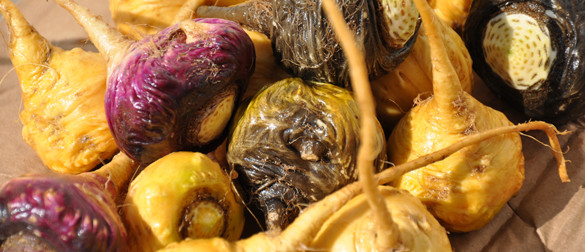
MACA
WHAT IS IT? Maca refers to the root of Lepidium meyenii, a member of the Brassica family.
THE CLAIMS. Maca is stated to be an adaptogen (supports biological response to stressors), a libido-enhancer), and a nutrient-dense “super-food”.
MY COMMENT: Maca is a turnip-like vegetable related to garden cress (Lepidium sativum), traditionally grown in the highlands of Peru. Ever thought about adding turnip to your smoothie? No? What if I charged lots of money for it, would it make more sense? While the price for Maca has come down in recent years (mostly because much of it is now grown in China), it is still a lot of money for a bag of powdered turnip. While there is some weak scientific support suggesting that Maca has libido-enhancing effects in men(1, 2 ) and could be beneficial in managing the symptoms of menopause(3, 4), I have to point out that Maca is traditionally consumed as a food, not a medicine. As a practicing herbalist, I have learned to not place my confidence in a few random studies to guide my use of a herb or food: the proper context is its traditional use. Note as well that Maca contains compounds called glucosinolates, which provide for Maca’s bitter taste, and has a goitrogenic activity that could possibly interferewith iodine uptake by the thyroid. One way to break glucosinolates down, however, is to cook them, but of course, unlike the traditional people in Peru that consume it as a staple, nobody that buys Maca as a superfood actually cooks it before using it as a supplement.
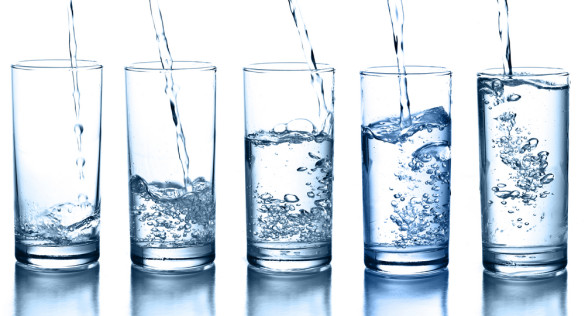
ALKALINE WATER
WHAT IS IT? Alkaline water is water that, supposedly, has been rendered more alkaline, by artificially increasing its pH through electrolysis. And I say “supposedly” for good reason.
THE CLAIMS: Illness and disease only occur when the body is acidic, and hence, consuming alkaline water prevents and treats disease.
MY COMMENT: The alkaline/acid theory of disease is rife with
simplistic thinking and errors, often promulgated by people that lack
even a basic background in chemistry. When we talk about the pH of the
body, what exactly are we referring to? The mouth? Skin? Urine? Blood?
Cerebrospinal fluid? If it’s the pH of the blood we’re referring to, it
is neither acidic nor alkaline, which is the optimal environment for the
myriad number of chemical reactions that occur within it. Blood pH is
thus tightly controlled by homeostatic mechanisms, and diet has very
little influence over this when the body is healthy. The epidemiological
associations that links dietary protein with bone loss, for example,
are contradicted clinical evidence, demonstrating that such associations speak more to prevailing bias
than any causal relationship. So, if the alkaline/acid theory is mostly
bunk, is there any benefit to drinking alkaline water? The questions
begs further inquiry – what is it that makes water more alkaline?
Minerals! If you have ever lived or visited the prairies, and noticed
the lime build-up on faucets, sinks, tubs, and dishes, you know what I’m
talking about. The potential benefit of alkaline water is because it
can provide vital minerals important to your health, something I
experienced when recovering from chronic dysentery in the Hunza valley,
whose denizens drink the mineral-rich water that comes off the Ultar
Glacier. You should know, however, that you can make water more alkaline
by ionizing any mineral within it. The electrolysis units that are sold
to consumers that claim to alkalize water, charge huge money for a
device worth nothing more than a couple hundred bucks, and use either
salt, or something like calcium glycerophosphate, to convert purified
tap water into an alkaline-rich water. If you use salt, then it’s
alkalized with sodium and chlorine, and you end up with “electrolysed
water”, which is a dilute solution of sodium hypochlorite, AKA bleach
(see MMS,
below). And if it’s alkalized with calcium glycerophosphate, then you
end up with an alkaline water rich in calcium and phosphate. Read below
under Coral Calcium on why I think more
calcium in your diet is a bad idea. Perhaps if these electrolysis units
used something like glacial rock dust, we might end up with something
resembling the life-giving waters of glacial rivers in places like the Vilcabamba and Hunza valleys. But I’m pretty sure this also has something to do with the location itself.
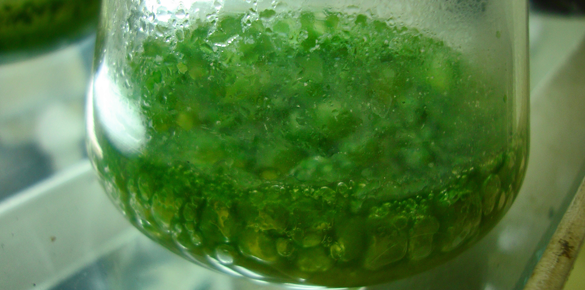
BLUE-GREEN ALGAE (BGA)
WHAT IS IT? BGA refers to a number of different fresh-water species of algae (cyanobacteria), including Spirulina and Aphanizomenon flos aquae (AFA).
THE CLAIMS: BGA is a traditional food source that is loaded with
healthful nutrients, including essential amino acids, minerals,
essential fatty acids, and vitamin B12.
MY COMMENT: I first encountered BGA in my first year of herb
school in 1993, whose virtues were extolled by one of my fellow students
as a panacea, who supplied me with reams of “data” (i.e. marketing
materials) to support her assertions. I was immediately turned off by
the high-pressure, multilevel marketing tactics, and upon further
investigation, learnt that in another context, blue-green algae is
viewed by public health officials as a toxic contaminant of drinking
water. Whoa! Talk about the disconnect! Steering clear of it, BGA kind
of fell off my radar for awhile, but with the advent of the superfood
movement it showed up again in the mid-2000s, embraced by a new
generation of smoothie enthusiasts. The first claim that BGA is a
traditional food source is based on a limited number of ethnographic
reports, from a very limited number of traditional groups. While these
reports are often provided as strong evidence for the safe consumption
of BGA, on a global basis, the consumption of BGA was actually quite
rare given its distribution. No doubt this is because it is pond scum,
and experience teaches that drinking water from scummy green ponds will
likely make you very sick. As such, BGA thrives in shallow, stagnant,
nutrient-dense water, exactly like Klamath Lake in southern Oregon,
where many supplement companies source their BGA. Sitting right on a
major migratory bird route, public health officials in Oregon regularly
close access to Klamath lake due to toxic blue-green algae blooms. So
why are we eating it again? Oh, it’s for nutrient density, right?
Unfortunately, the reality is that you would have to eat an very large
(and hence, very expensive) amount for BGA to have any significant
impact upon your nutritional status. As for it being a B12 source, BGA
actually produces a pseudo vitamin B12 that is inactive in humans and is thus not suitable as a source for vegans. Lastly, if you’re still not convinced, there is the neurotoxin
angle, which include a great deal more toxins than manufacturers
currently test for – even if they made their test data publicly
available – which they do not.
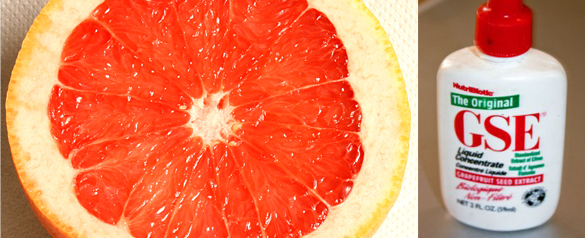
GRAPEFRUIT SEED EXTRACT (GSE)
WHAT IS IT? GSE is a proprietary extract derived from the seed of the grapefruit (Citrus × paradisi). As a proprietary product, the exact ingredients and details of the manufacturing process have not been publicly disclosed.
THE CLAIMS: GSE extract is an all-natural antimicrobial compound
that can be safely used to treat infection, or used as a safe
preservative in natural products.
MY COMMENTs: I have written on GSE before: here and here .
If there is one product that sets my bullshit detector ringing it is
GSE. This is sham product, masquerading as natural, but demonstrated
time and time again to contain synthetic antimicrobial compounds such as
triclosan and benzalkonium chloride that are fucking up our
environment, screwing up our hormones, and contributing the problem of
antibiotic resistance! Ok, sorry for swearing. It’s just a little
irritating that this product still exists! If you have a passion for
natural health, I heartily encourage you to boycott any company that
sells GSE, or uses it as a product ingredient. Read the label – you
might be surprised how many products it can be found in.

MIRACLE MINERAL SUPPLEMENT (MMS)
WHAT IS IT? MMS is a solution of 28% sodium chlorite in distilled water, described by Jim Humble in his 2006 self-published book, The Miracle Mineral Solution of the 21st Century. Humble and others suggest that MMS is to be mixed with citric acid to create chlorine dioxide, before therapeutic application.
THE CLAIMS: MMS is an effective remedy in the prevention and treatment of a wide-number of diseases, from the common cold to cancer.
MY COMMENTs: I’m almost willing to let evolution
“chlorinate” the gene pool on this one, but for the dignity of my craft,
suffice it to say that MMS is both unsafe and not a natural product.
Sodium chlorite is closely related to household bleach, used in
industrial processes to bleach paper, and as a disinfectant. Take a look
on the side of a bleach bottle – what more about a skull and crossbones
do you need to know? With an LD50 of 350 mg/kg in
rats, as little as a 10-15 grams of chlorine dioxide is lethal in
humans. Just last year, an individual in Washington state was convicted for the sale and distribution of MMS, and is now looking at the possibility of a few decades in prison.

COLLOIDAL SILVER
What is it? Colloidal silver is a solution of silver nanoparticles less than 0.1 micron in size, suspended in a liquid (forming a colloid).
THE CLAIMS: Colloidal silver is a natural alternative to
conventional antibiotics, and can used to treat bacterial infection, as
well as other pathogens such as viruses and intestinal worms.
MY COMMENTs: When silver is present in sufficient concentration
and directly comes into contact with bacteria, it does indeed exert a
broad-spectrum antimicrobial activity. This was the idea behind dropping
silver nitrate into the eyes of newborn babies to prevent
conjunctivitis (an unnecessary practice), and is the idea behind weaving
silver fibers into clothing like underwear and socks. So yes, silver is
antimicrobial, but the larger issue is when silver is ingested – does
it have the same effect as when applied topically, and is it safe?
Remember, just because something exerts an antibacterial effect in a
petri dish, or when it’s applied topically, doesn’t mean that it has
that same effect systemically. The research I’ve surveyed suggests that
silver is not a reliable compound for treating any kind of infection
systemically, and if you ingest it too often, it will accumulate in your
body and irreversibly turn your skin a zombie-like, bluish-grey hue.
As to the importance of it being a colloid, the antimicrobial effect of
silver is due to silver ions released from the silver nanoparticles in
solution, but this is something that can also be observed with other
forms of silver as well, i.e. silver fibers in clothing. But while
silver does exert antimicrobial effects, its use in supplements,
clothing and other applications is poisoning the environment, and fostering the emergence of antibiotic resistant bacteria.
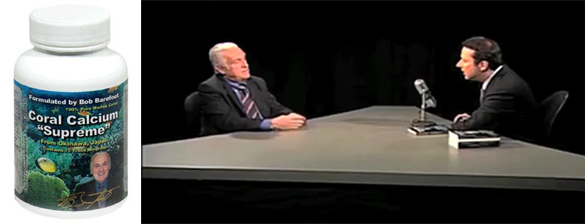
CORAL CALCIUM
WHAT IS IT? Coral calcium is a health supplement derived from fossilized coral reefs, composed calcium carbonate, and small amounts of magnesium and trace minerals. Mined from fossilized coral beds, coral calcium is ground to a fine powder, heat treated or ozonated for sterilization, and mixed with additives including silicon dioxide, rice flour, and magnesium stearate before being encapsulated and bottled.
THE CLAIMS: Disease is caused by the acidification of the body,
and a lack of minerals, especially calcium. Coral calcium alkalizes and
drives out this acid, addressing the underlying cause of heart disease,
as well as cancer, heart disease, diabetes, and Alzheimer’s.
MY COMMENT: If you stayed up past your bed time in the last 10-15
years, your glazed eyes staring at the television, then almost for sure
you saw the infomercials with Robert R. Barefoot, interviewed by
con-man Kevin Trudeau (Natural Cures “They” Don’t Want You to Know About).
It was mildly entertaining for about 30 seconds to listen to their
lugubrious claims, and the way in which Barefoot and Trudeau wove
together half-baked health theories with charges of conspiracy. Barefoot
states that his coral calcium is mined in Okinawa, from the same type
of fossilized coral rock that comprises the aquifers used by the
Okinawans to draw their water from, which some have claimed, is the
reason for their (once) remarkable longevity. The reality is that coral
calcium is hardly unique as a source of calcium carbonate, and is found
in many mineral sources such as limestone, chalk, and marble, as well as
oyster and egg shell. In other words, as a source of calcium carbonate,
coral calcium does not deserve the price it fetches nor the attention
it gets. It is after all, a kind of rock, and humans generally don’t eat
rocks – whole or powdered. Besides which, calcium isn’t all that hard
to get in your diet, and despite doctors telling people to consume more
calcium to prevent osteoporosis, it’s not so much a lack of calcium –
which is a hard but very brittle mineral – but a loss of collagen that
provides for a decrease in bone strength. This is why bone-soups are
good for osteoporosis prevention and treatment, because not only does it
provide for all of the minerals required by bone, including calcium,
but also the glycosaminoglycans and proteoglycans that feed the
connective tissues of our bones. Of course coral calcium also contains
small amounts of macrominerals such as magnesium, and trace minerals
such as zinc, but there are other more digestible and sustainable
dietary sources of minerals such as seaweed and nettle. And lastly,
despite the claims of made by Robert R. Barefoot, there is emerging
evidence that high doses of supplemental calcium leads to the
calcification of soft tissues in the body, and thus actually contributes
to etiology of diseases such as atherosclerosis.
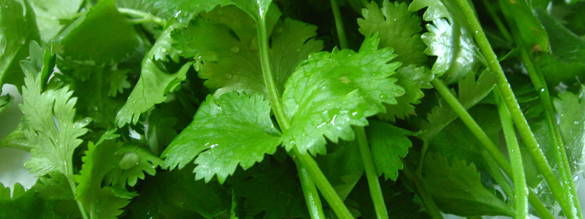
CILANTRO
WHAT IS IT? Cilantro (Coriandrum sativum) is an exceptionally common garden herb used in a variety of cuisines, consumed as both the fresh herb (cilantro, Chinese parsley), and as the seed (coriander, dhaniya).
THE CLAIMS: Cilantro tincture is stated to assist with mercury detoxification.
MY COMMENT: The origin of this assertion seems to some from Japan, with a series of studies published in the mid-1990s by Dr. Yoshiaki Omura, editor and publisher of Acupuncture & Electro Therapeutics Research. This is a quarterly journal that specializes in the use of questionable diagnostic techniques such as the Bi-Digital O-Ring Test (BDORT),
a procedure in which a patient forms an ‘O’ with his or her fingers,
and the diagnostician evaluates the patient’s health by trying to pry
them apart. Omura states that he accidentally discovered the virtues of
cilantro after eating Vietnamese soup, claiming that it promoted the
excretion of lead, mercury and aluminum in the urine. Here in North
America, these claims for cilantro were taken up by Dr. Dietrich Klinghardt, a non-herbalist health professional that received a lot of promotion on Dr. Joseph Mercola’s website.
Despite all their claims, however, there is no scientific evidence that
cilantro mobilizes mercury from the body when it’s ingested. Not that I
can’t believe it might – after all – perhaps many herbs that
have a similar or even more powerful diuretic activity, such as parsley
or ajwain, have this same effect. But consider too that the doses recommended
by Dr. Klinghardt for mercury detoxification are less than what someone
would obtain from eating it (particularly if you like cilantro, like
me). Similar to Maca, the therapeutic use of cilantro in mercury
detoxification suffers from an irrational belief that food-based
remedies in low doses exert a more powerful effect than eating them as a
food. Consider as well, that in the Rasa Shastra tradition of Ayurveda,
which actually utilizes the therapeutic effect of poisonous minerals
such as mercury only after extensive purification, that cilantro plays
no role in the purification of mercury, and nor is it prescribed in
cases of accidental poisoning. This is despite the thousands of years
that cilantro has been a part of the Indian materia medica. Perhaps the
problem here lies not so much with cilantro, but to the entire field of
mercury detoxification in alternative and complementary medicine, which
suffers from a lack of objective data, empiricism, and tradition.
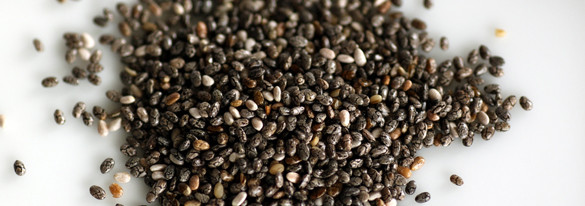
CHIA SEED
WHAT IS IT? Chia seed refers to the seed of (Salvia hispanica), a member of the mint family, native to central America.
THE CLAIMS: Chia seed is a superfood traditionally consumed in
Meso-American society that is rich in omega-3 fatty acids, protein, and
vital minerals.
MY COMMENT: Much of the information on the traditional use of
chia seed is sketchy, based on surviving pre- and post-Columbus
accounts. The accounts indicate that chia was grown as a crop by
Meso-American peoples, who utilized different parts of the plant for
different purposes. With regard to the seed, the vast majority of these
sources describe chia seed as medicine, rather than a food (Cahill 2003,
p 609). And this is for good reason. Like flax and hemp, Chia is
exceptionally high in omega-3 and omega-6 fatty acids, but as I describe
in my post on flax,
these polyunsaturated fatty acids are exceptionally unstable, and
quickly peroxidize when exposed to heat, light or oxygen. It is for this
reason that hemp and flax are generally eaten raw, and the same applies
here: cooking chia seed turns it into a toxic substance. Like flax and
hemp, when raw whole chia seed is ground up and mixed with water, it
produces a gooey, fiber-rich mucilage that can be ingested as a bulk
laxative, and to soothe intestinal inflammation. The slippery, slimy and
cooling properties of chia are also enjoyed in Southern Mexico and
Guatemala as a beverage called “chia fresca”, mixed with lemon and
sugar. But this is about the extent of its benefits, at least with
regard to medicinal and culinary uses. The claims that chia is a source
of nutrients including protein, minerals and vitamins is countered by
the fact that the unprocessed seed contains anti-nutrient factors such
as phytic acid that either binds up these nutrients or otherwise
inhibits our ability to digest them. Normally we might cook a food like
chia to deactivate these anti-nutrient factors, but we can’t do that
without damaging the essential fatty acids. So in this way, chia is
really nothing more than an expensive fiber supplement – which is ok –
but hardly a proper food, and even less a superfood. Given my long
history with food allergies, I am something of a canary in a coal mine,
and when I’ve carefully chewed raw chia seed, I get a distinct
inflammatory response in my mouth. This has been sufficient for me to
warn off others, but my experience is bolstered by the literature, which
shows that chia seed consumption may enhance inflammation, marked by an
increase in serum interleukin 6 (IL-6), monocyte chemotactic protein (MCP), and immunoglobulin E (IgE).
Feb 15, 2016
Superfoods are bullshit, part 2
When I published part one of this two part series on superfoods,
we received so much traffic that it almost crashed our website! I guess
I might have touched a nerve with this issue, which isn’t surprising to
me, considering just how long we have been sold this “superfood” myth.
What’s been more surprising to me is how few people have spoken out on
this issue before. I always thought it was obvious, but I guess that’s a
reflection of just how out-of-step I am with the natural health
industry. My goal is to teach both my patients and students to become
self-reliant, to develop for themselves an insightful and penetrating
vision of health that allows them to see past the hype. This is why I
include a strong component of patient education in my clinical practice, and was part of my motivation to found the Dogwood School of Botanical Medicine in 2012.
Years ago in my early twenties, I spent a great deal of time
meditating and studying Buddhism, traveling as far away as Bodhgaya in
modern-day Bihar. Like many young men, I was a determined and tenacious
fellow, and at one point I seriously contemplated becoming a monk,
although given my non-conformist streak I have not sure how well I would
have done. It wasn’t just one experience, however, but several during
my studies that brought it home that this probably wasn’t the life for
me. While I was in Bodhgaya,
I made friends with a Jewish-Buddhist noodle-maker from Austria who had
been coming there on a regular basis for decades. We meditated together
and had many discussions, and I remember one conversation wherein he
described his youth, and how like me, he spent so much of his time and
energy studying and practicing Buddhism. While he clearly retained his
original commitment, it seemed that over time his perspective and intent
had changed. “I used to want to be enlightened so badly,” he mused,
“but now all I want to be is a regular schmuck”.
Which brings me back to superfoods. Yes: we are all special, and
super-duper in our own way. But although each of us is comprised of
stardust, and unique as an individual snowflake, the converse is also
true. Our individual lives on this pale blue dot often seem to have
about as much meaning as a cloud of dust, and in the end, our bodies are
as fragile as a snowflake. So regardless of the superlatives, in the
end we are all a bunch of schmucks, and I think the world would be a lot
better place if we could all recognize this fact. So fuck the
entitlements that separate us, as well as the entitlement of superfood.
Just as in fostering a healthy community, our diet should reflect a
natural and grounded diversity, appreciating each element for the
integral part that it plays.
WHEATGRASS JUICE
WHAT IS IT? Wheatgrass juice refers to fresh juice extracted from the pulverized cotyledon (“seed leaf”) of the wheat plant, i.e. Triticum aestivum.
THE CLAIMS: Wheatgrass is an elixir of health, loaded
with nutrients including vitamins and minerals, and supplies a complete
source of protein. Wheatgrass juice also contains potent antioxidants,
enzymes, and phytonutrients that protects the body against chemicals and
pollutants, and helps to boost hemoglobin levels in the blood.
MY COMMENT: Wheat is an ancient food, cultivated
throughout Eurasia, North Africa and the Middle East for thousands of
years. We can find mention of wheat in the very earliest medical texts:
in the Nei Jing Su Wen of China, in the Charaka samhita of India, in the Ebers Papyrus of Egypt, and European sources such as Dioscorides.
To be sure, all of these texts speak to the properties and uses of
wheat, but none describe uses for raw wheatgrass. In fact, there is no
evidence of really anyone juicing and drinking wheatgrass until it was
introduced by raw foodist Ann Wigmore in the 1970s.
Like all green plants, wheatgrass is rich in chlorophyll, so any
supposed benefit here is not unique to wheatgrass. Wheatgrass is also
stated to contain a diverse array of nutrients, including vitamins,
minerals, and proteins, and to some extent this is true. Wheatgrass is
loaded in B vitamins (except B12), and contains significant amounts of
manganese, zinc, and iron. The protein content is also fairly well
balanced, but you’d have to consume about 2 kg on a daily basis to meet
your basic protein needs. Some claim that wheatgrass contains enzymes,
like the intracellular antioxidant super oxide dismutase, and while I
could find no evidence of this, it is entirely irrelevant anyway,
because as a kind of protein, an enzyme is broken down into simple amino
acids before being absorbed. As for the health claims, due to the lack
of traditional knowledge on wheatgrass we have to take anecdotal reports
with a grain of Himalayan pink salt, and corroborate this with the
scientific research, for which there is really nothing significant. In
light of this curious lack of evidence, despite its ongoing popularity,
wheatgrass ranks fairly high on my bullshit meter. The fact of the
matter is that wheatgrass is a grass, and humans – unlike ruminants –
have never subsisted on grass as part of our traditional diet.
My own personal experience? Whenever I have consumed wheat grass my
throat begins to close up, inducing a mild anaphylactic response – which
is the only thing I have ever noted to cause this effect in me. But
then again, I have a long history of hay fever, and am definitely
sensitive to wheat-containing foods. And while wheatgrass doesn’t
contain gluten, it does contain other constituents that appear to induce
pro-inflammatory Th1-type immune responses
that are over-expressed in chronic inflammatory diseases, e.g. multiple
sclerosis, Hashimoto’s thyroiditis, Crohn’s/colitis, celiac disease,
diabetes, rheumatoid arthritis, etc. As such, wheatgrass is hardly a
good remedy for everyone, and when placed into its traditional context,
becomes rather suspect and maybe even a little dangerous. One last
caution relates to the fact that wheatgrass juice is usually consumed
raw, and therefore may be contaminated with bacteria or molds, and so
extra care should be taken when preparing it for consumption – as is the
case with all raw foods.
RAW CACAO
WHAT IS IT? Raw cacao, or coco, refers to the minimally processed seeds of Theobroma cacao, a tree that is native to Central America.
THE CLAIMS: Raw cacao is a superfood that is abundant
in a variety of nutrients and antioxidants that help to lower blood
pressure, improve circulation and benefit the cardiovascular system, as
well as neutralize free radicals and improve brain function.
MY COMMENTS: The big exponent here for raw cacao is a
fellow named David Wolfe, in some respect the godfather of the superfood
movement, who gave a talk on chocolate (or rather, ‘ca-cao’) at a TEDx conference
a few years back. While the video contains some slightly useful
information, mostly it’s a lot of button-pushing that is woefully
lacking in depth. For example, Wolfe’s claim that raw chocolate is
loaded with “antioxidants,” a statement that ignores the fact that many
of these “antioxidants” are actually toxic when consumed in large
amounts, interfering with protein digestion and mineral absorption, and
in many people, inducing hypersensitivity reactions. Referred to in my
book Food As Medicine as “anti-nutrient factors”, these chemicals
are produced in seeds by plants to discourage predation, and when we
fail to account for them we suffer the repercussions, such as pellagra
from corn, or celiac disease from wheat.
Not only is Mr. Wolfe’s “discovery” of plopping raw cacao beans into
his smoothies predicated on a misapprehension of the science, but it
flies in the face of the very Central American traditions that he
purports to uphold and honor. From all the research I have done, there
is absolutely no reference to the use of raw cacao beans in Central
American society as a food or beverage. Like coffee, aged cheese, fine
wine, and Chinese tea, cacao needs to be prepared and processed to
produce its unique flavor compounds. This begins with fermenting the raw
cacao beans for several days. Once properly fermented, the slimy
biofilm is cleaned off and the beans are dried and gently roasted, like
coffee, to kill any potential microbial pathogens and bring out the
chocolate flavor. The only people that drink green coffee are those that
have bought the antioxidant argument hook, line and sinker, eschewing a
nice tasting brew for the false promise of super powers. Otherwise,
whether it is a Light City or a French roast, coffee is roasted so it
actually tastes like coffee. Thus, if your supposedly “raw cacao” tastes
like chocolate, it mostly definitely has been fermented and roasted in
some fashion, and isn’t actually raw at all. However, it is possible
that some producers may not be adequately roasting their cacao to make
some kind of attempt at being raw, in which case, the beans may be
contaminated with microbes acquired during fermentation, including Staphylococcus, E. coli, Salmonella, Aspergillus, etc.
In the end, “raw cacao” appears to be nothing more than a marketing
device to capitalize on all the people that bought into the raw food
movement sold to you by people like Mr. Wolfe. As for the benefits of
chocolate generally? Yes, in small amounts, like tea and coffee,
chocolate may provide some health benefits, but I think much of this is
overblown. The reason we consume chocolate is because we like it – how
complicated does it need to get? But in those folks that have a
sensitivity to cereals or are otherwise gluten-intolerant, chocolate is
probably best avoided if you continue to experience gut or joint issues.
Same with coffee.

VEGAN PROTEIN POWDER
WHAT IS IT? Vegan protein powder refers to a
proprietary mixture of protein-rich, plant-based ingredients derived
from the seeds of various cereals and legumes, including pea, hemp,
pumpkin, alfalfa, sunflower, brown rice, amaranth, quinoa, millet,
buckwheat, garbanzo, kidney, lentil, adzuki, chia, sesame, flax, and
cranberry.
THE CLAIMS: Vegan protein powder is an easy-to-digest
and hypoallergenic source of plant-based protein that provides a full
complement of essential amino acids that can be used to replace other
soures of protein in the diet.
MY COMMENTS: About 25-30 years ago protein powders were
the lonely preserve of bodybuilders, who rationalized its use to boost
the protein content of their diet, thinking that this could prevent
muscle loss and enhance recovery after exercise. In fact, the
bodybuilders were the original smoothie drinkers, experimenting over
this time not just with protein powder, but a huge variety of
supplements such as creatine and glutamine, as well as drugs such as
ephedrine and tamoxifen. Like obsessive alchemists in search of body
“gold”, some bodybuilders would literally try anything to gain
that extra striation of muscle, to make those veins pop just a little
bit more. But while supplements come and go, protein powder has always
formed the mainstay of bodybuilding, and it was its devoted legions over
the years that eventually brought it to the mainstream. Now, pounding
powdered protein is more a fashion statement, an accessory to let your
Instagram fans know just how serious you are about getting fit and
healthy. “Look everyone, what I sacrifice for good health!” I guess its
not too bad – strawberry sort of goes with kale, flax oil, and green pea isolate. Or maybe not…
The thing is, pounding down more protein isn’t necessarily a good
idea. Apart perhaps from its “technical” use in athletics and
bodybuilding, there is no body of research telling people living in
industrialized nations that we need dramatically more protein
in our diet. Unless of course you are a vegan, in which case getting
sufficient protein in your diet becomes a huge issue no matter where you
live. Most bodybuilders generally think that whey protein is superior
to any other type of powdered protein, but if you’re a vegan, or if you
believe that you need to switch out animal protein for vegetable
protein, then plant-based protein powders might make sense. But there
are problems with them, primary of which is how they are typically consumed, i.e. in a cold smoothie, which I have already described in part one
as being hard to digest. Improperly digested protein leads to bacterial
protein putrefaction, which explains one of the reasons folks often
feel so “farty” on protein powder. But this effect is also due to the
fact that many of the plant-protein sources are inherently harder to
digest, and despite the nutritional claims on the label, contain
unaccounted-for antinutrient factors that impair protein digestion and
mineral absorption. This alone invalidates the claim that these vegan
protein powders are ‘hypoallergenic’, as many many allergies are
predicated on eating foods that induce a background hypersensitivity.
Raw vegan protein powders are the worst offenders here, because although
slightly germinated cereals, legumes, or seeds are slightly
more digestible, this process is insufficient to effectively detoxify
and breakdown the antinutrient factors contained within them. Has any
culture in the history of the world ever eaten slightly germinated,
uncooked cereals or legumes as a staple food? No! Like all raw food, raw
vegan protein also contains an inherent risk of food borne illness,
which is exactly what happened recently when 12 people acquired a Salmonella infection from eating a raw vegan protein powder.
In contrast to the use of hemp seed, which was traditionally eaten as a
minor food, some sources of vegan protein powders such as cranberry seed
are entirely novel. My cynical mind tells me that all the fuss over
cranberry protein’s “antioxidant” benefits is just the cranberry juice
industry trying to create a new market for what is actually a
by-product. A seemingly better choice among the various vegan protein
powders is pea protein isolate, which far from being raw or even
“natural,” is a highly processed protein-rich extract derived from the
common pea (Pisum sativum). I have also written on this before,
and while pea protein isolate appears to be safe, the processing
methods used don’t necesarily deal with all the potential sensitizers
and allergens in pea, and may in fact concentrate some of them in the
process. Consider the fact, for example, that we’ve only recently
discovered that soy protein isolate, now found in a huge variety of consumer food products, is linked with an increase in risk of breast cancer.
To be sure, dried peas have been a staple food in West Asia, North
Africa and Europe for thouands of years, but it was always prepared as a
cooked food – such as a flavorful soup or a dahl – not as a finely
milled powder. Beyond any potential health issues with pea protein
isolate, and plant-based protein powders as a category, I guess it just
seems a little sad to me, and is further evidence of our societal
disconnect with food. Sigh.
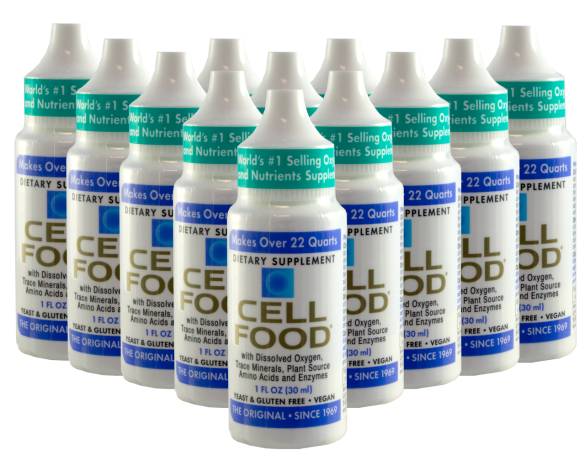
DEUTERIUM SULFATE (AKA CELLFOOD)
WHAT IS IT? Deuterium sulfate is the chief
ingredient in a line of health care products marketed under the name
“Cellfood”, which also contains an ionic “trace mineral” blend, a “trace
enzyme” blend, and a “trace amino acid” blend.
THE CLAIMS: Cellfood is an oxygen and nutrient
supplement that delivers oxygen to the body at the cellular level,
scavenging free radicals, detoxifying the body, and providing a wide
array of plant-sourced trace minerals, enzymes and amino acids in
colloidal form.
MY COMMENT: Where should I start? How about at the end,
with Cellfood’s supposed “trace enzyme” and “trace amino acid” blend.
In nutritional science we use the term “trace minerals” with reference
to the fact that we need these minerals, such as iodine and manganese,
in very small amounts. But amino acids are macronutrients, i.e. we need
them in very large amounts to supply our bodies with the energy and
substrate required to maintain homeostasis. Amino acids might be found
in trace amounts in certain foods, say like wheatgrass, but this doesn’t
make “trace amino acids” a thing. Similarly, there are no trace
enzymes, because unless we’re talking about vitamins as co-factors,
there are no enzymes that are required for human health. As for trace
minerals, I have no issue with this per se, and sometimes I recommend
ionic supplements for people whose diet, or environment (e.g. the
Pacific Northwest) might be lacking a full complement of trace minerals.
More often, however, I have folks make up bone soup with a handful of
mineral-rich herbs such as seaweed and nettle, and vegetable trimmings
that would otherwise be composted.
As for the primary ingredient in Cellfood, i.e. deuterium sulfate,
this is where things get wacky. Deuterium is one of two stable isotopes
of hydrogen, in which the nucleus of deuterium (called a deuteron),
contains one proton and one neutron, whereas the more common hydrogen
isotope (called protium), has no neutron in the nucleus. Deuterium is
actually quite rare in nature, only one out of 6400 hydrogen atoms, and
since its discovery in 1931, has been used by nuclear engineers as a
neutron moderator, to sustain nuclear chain reactions. And indeed, it
appears that the supposed discoverer of the therapeutic benefits of
deuterium sulfate, a man named Everett L. Storey, had something of a
connection to the nuclear industry himself, with websites promoting
Cellfood claiming that Mr. Storey invented the triggering mechanism for
the atomic bomb, was awarded a Nobel prize twice for his work, and was
lauded by Albert Einstein as a “genius”. In contrast to these claims,
however, his obituary
is rather more pedestrian, mentioning nothing about his supposed career
as a scientist or Nobel prizes, noting instead that he “claimed” to
have invented a game that inspired the creation of the hydrogen bomb. The level of spin and BS on this product is really quite something!
But what exactly is deuterium sulfate? Well, considering that
deuterium exhibits many of the same chemical properties as regular
hydrogen, deuterium sulfate is a variant of hydrogen sulfate (H2SO4),
i.e. D2SO4, the primary ingredient in drain cleaner, used in the
manufacture of phosphate fertilizers, and as an electrolyte in lead-acid
batteries. As for the claim that Cellfood “oxygenates” the body as a
way to deal with free-radicals and disease, it is the height of
irrationality to suggest that an oxidizing substance, i.e. oxygen(!),
also serves as an antioxidant. Yes, the body requires oxygen to
produce energy, but this also generates potent free-radicals such as
superoxide in the process. Once released into the cell, this highly
reactive free radical creates a world of chaos that results in tissue
damage, forcing the body to synthesize a protein antioxidant called
superoxide dismutase to mop up as much it as possible. While oxygen is
an efficient means to produce cellular energy, our body’s reliance upon
it comes at a cost, called oxidative stress, placing inherent
limitations upon health and longevity. If the oxidative stress theory of
disease has any merit, it cannot be that consuming or imbibing more oxygen is the cure.
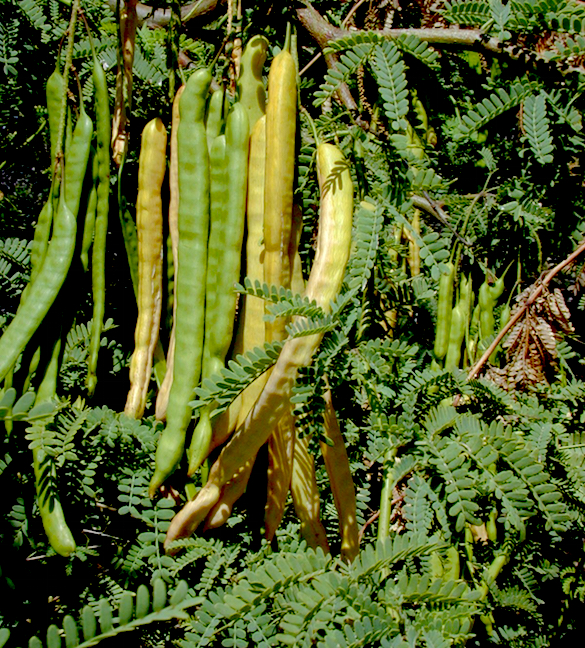
MESQUITE POWDER
WHAT IS IT? Mesquite powder, also known as algarrobo, refers to the powdered legume pods that grow on the thorny Mesquite tree (Prosopis pallida) that is native to Colombia, Ecuador and Peru.
THE CLAIMS: Mesquite powder is a staple food in the
traditional diet of Peru that is rich in protein and minerals, with a
low glycemic index that makes it effective to help balance blood sugar
and control diabetes.
MY COMMENTS: The pods of the Mesquite tree have been
eaten by humans for thousands of years, with the earliest recorded
evidence of its consumption uncovered in the Tehuacan valley of Mexico,
dating from about 6500 BCE. Important as one of the few tree species
that can survive in desert regions, the Mesquite tree is considered to
be a threatened species in South America, and while it is grown
extensively in other regions, one should make sure to source it with
care.
Traditionally, the raw algarrobo pods are chewed as a snack by
indigenous peoples, and dried in the sun and pounded with stones to make
a coarse flour. The algarrobo pod has an exceptionally sweet taste, and
when reduced to a flour, is traditionally used to make a sweet drink
called ‘añapa’ or ‘yupisin’ that can also be made into a fermented
beverage. Contrary to the low glycemic claim of superfood marketers,
however, Mesquite pods actually contain about 45% soluble sugars, most
of it in the form of sucrose. This means that it should definitely be
avoided if you suffer from hypoglycemia or diabetes. Contrary to the
claim as well that algarrobo powder is super-packed with nutrients, the
whole pods only contain about 5-10% protein, with appreciable amounts of
potassium, small amounts of calcium, magnesium and iron, and not much else to write home about.
So am I down on algarrobo? No, I actually think it’s pretty cool as
an exotic alternative sweetener for occasional use in baked goods, but
only once we separate fact from superfood marketing fiction. If
promoters continue to make ridiculous health claims about its effect on
blood sugar, however, I expect that we might see a class action lawsuit
for this “superfood” too. Smarten up, fellas!
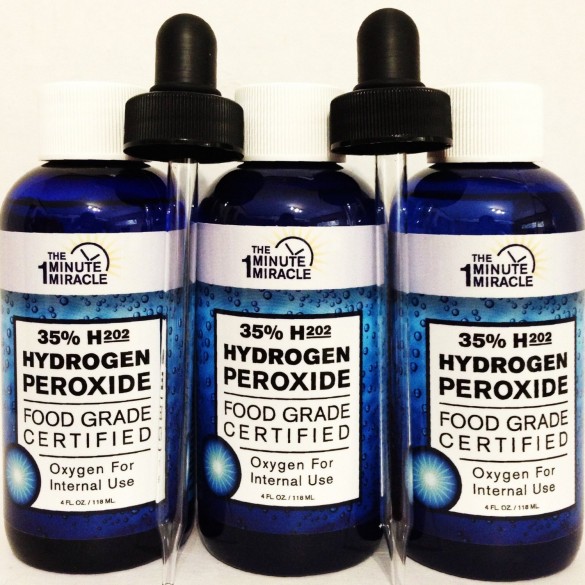
HYDROGEN PEROXIDE
WHAT IS IT? Hydrogen peroxide (H2O2) is a pale-blue
liquid that upon cursory examination appears to be very similar to water
(H2O), but in actuality displays chemical properties that make it very,
very different.
THE CLAIMS: Hydrogen peroxide is a natural substance
that occurs in rainwater and in the body, and when consumed in “food
grade” form, it oxygenates the body and is thus effective in the
treatment of everything from allergies and altitude sickness, to
diabetes and cancer.
MY COMMENTS: Hydrogen peroxide (H2O2) is a simple
peroxide, a term used to describe a compound that displays a weak
oxygen–oxygen single bond that can be easily cleaved, resulting in the
formation of a highly reactive hydroxyl radical. Due to its reactivity,
hydrogen peroxide is used industrially as a bleaching agent and
disinfectant, and while small amounts of hydrogen peroxide do occur
naturally in rain and sea water, most environmental H2O2 is an
anthropogenic air pollutant that has been show to cause adverse effects
on plants and human health. Within the body, hydrogen peroxide is an
intermediate compound synthesized from the superoxide radicals generated
during metabolism by the antioxidant enzyme superoxide dismutase. In
this form, hydrogen peroxide is less reactive than superoxide, but in
the presence of ultraviolet light or by interacting with metal ions such
as iron, it is converted into the highly reactive hydroxyl radical,
resulting in oxidative stress. The over-production of H2O2 is a primary
factor in the oxidative stress theory of disease and aging, evidenced by
the fact that the body maintains a vast armamentarium of enzymes such
as catalases and peroxidases to deactivate it.
Despite its inherent toxicity, the body does use H2O2 to some
advantage, for example, when released by white blood cells to kill
engulfed bacteria, although this also causes some degree of tissue
damage and inflammation. Recent research has also indicated that in very
small amounts H2O2 functions as a signaling molecule to fine-tune
healthy cell function. But despite these benefits, it doesn’t change the
fact that H2O2 remains widely regarded as a cellular toxin, and in
consideration of this, it makes no sense to consume it internally. It
would be one thing if hydrogen peroxide had a long history of use, but
hydrogen peroxide as a therapeutic agent is a 20th century phenomena –
and a very obscure one at that. And while 3% hydrogen peroxide is easily
available in pharmacies for external use as an antiseptic, advocates
for H2O2 ingestion recommend a “food grade” hydrogen peroxide that has
an inexplicably high concentration of 35%, used in drop doses mixed with
distilled water.
Like Cellfood, the use of H2O2 is predicated on the belief that it is
a lack of oxygen that causes disease, and if we can just somehow drive
more oxygen into us that we can live for ever. But hopefully now, after
reading this and my comments for Cellfood, you can appreciate just how
irrational this argument is. Even if H2O2 maintains some important and
beneficial biological activities, the body has absolutely no problem
producing an excess of it, so why should we ever think to consume more?
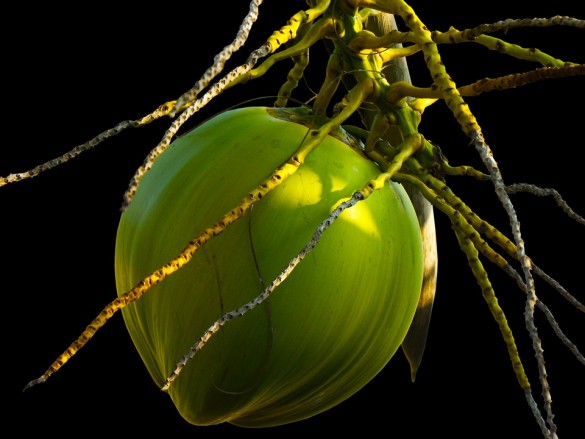
COCONUT WATER
WHAT IS IT? Coconut water is a clear liquid found
within the immature fruit of the coconut tree (Cocos nucifera), which
suspends the developing endosperm until it gradually matures as the
fleshy white coconut “meat”.
THE CLAIMS: Coconut water is an all-natural, low
calorie beverage that is rich in electrolytes, minerals, and
antioxidants, that promotes hydration, weight loss, and good digestion.
MY COMMENTS: Coconut and coconut water is widely used
as a food and beverage throughout the tropics, and is mentioned in the
very earliest of texts on Ayurveda. In India, coconut water is widely
used to support hydration, providing a balance of sugars and
electrolytes in a sterile solution. In a country where poverty is
rampant and clean water a challenge, fresh local coconut water provides
significant advantage over oral rehydration packets that require the use
of purified water. In Ayurveda, coconut water is considered to be cool
in energy and reduces pitta, used therapeutically to treat dehydration,
thirst, bladder disorders, and diarrhea, and applied topically for skin
irritation. Given too that it resembles the shape of a head (as well as
being a euphemism for such), there is a folk belief that the coconut
water is analogous to the fluids that nourish and protect the brain, and
hence the suggestion that consuming it benefits the mind. When I travel
to the tropics, enjoying fresh coconut water and the delicious jelly is
usually high on my agenda, as it is a good way to cool the body and
rehydrate when suddenly exposed to the tropical heat.
Nowadays of course, you don’t need to visit the tropics to indulge in
coconut water, as it can literally be found almost everywhere, sold as a
healthy alternative to soft drinks and fruit juice. The problem is that
bottled coconut water is not fresh coconut water – it is pasteurized,
and thus heat-treated – which denatures the product’s quality and flavor
significantly. Worse still is the coconut water sold in tetrapaks or
cans, from which components of the container such as plastics and dyes
leach into the food. Of course, you can also buy imported immature
green coconuts now and extract the fresh juice yourself with your own
machete, but as you wield your cutlass consider the carbon footprint
involved in importing a whole green coconut. You wouldn’t think to eat
fresh raspberries when you’re in Fiji, so why think to drink coconut
water when you’re in Michigan or Alberta? Coconut water is a great local
food, and personally, I’d like to see it stay that way. Besides which,
the claims made by promoters for their bottled products are over the
top, which is the reason why manufacturer Vita Coco was successfully
slapped with a class-action lawsuit in 2012.
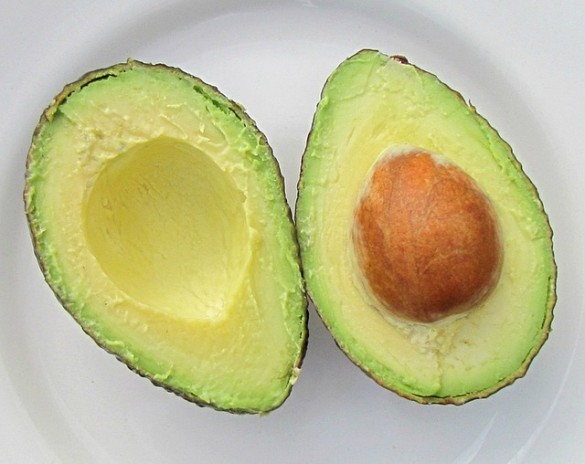
AVOCADO PIT
WHAT IS IT? Avocado pit refers to the hard, woody fruit enclosed in the fatty mesocarp of the Avocado tree (Persea americana), native to Central America, but now cultivated in tropical regions all over the world.
THE CLAIMS: Avocado pit is rich in antioxidants that
decrease inflammation, lower high serum cholesterol levels, and prevent
heart disease and stroke. Avocado pit also benefits digestive disorders
such as ulcer, constipation and diarrhea, prevents and reduces tumor
growth, boosts the immune system, alleviates arthritis, promotes weight
loss, and reduces exercise-induced asthma.
MY COMMENTS: Wow, what is avocado pit not good
for? The problem is, however, that all of these claims are entirely
fabricated, a product of wishful thinking that has no basis in
traditional medicine nor the science. Like “raw cacao”, the purported
benefits of avocado pit are an inference based on the fact that it
contains antioxidants, which I have already established, are a
double-edged sword that cause problems when consumed in significant
amounts. I could go on at great length, but as I have already written on the subject of the avocado pit,
I suggest you check it out. Besides the questionable benefit of these
“antioxidants,” avocado pit also contains trypsin inhibitors that
interfere with protein digestion, as well as small amounts of
hydrocyanic acid and cyanogenic glycosides – both of which are toxic.
Does avocado pit still sound like a superfood to you?
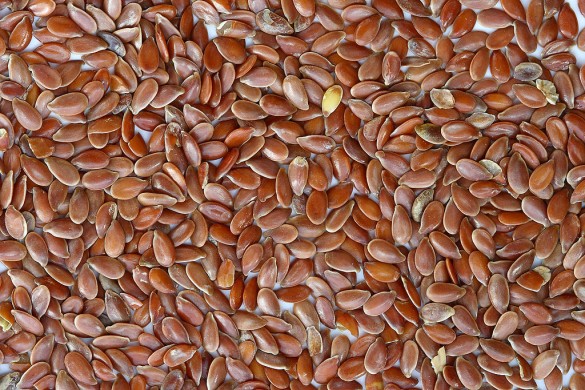
FLAX OIL
WHAT IS IT? Flax oil is the expressed oil from the seed of the flax plant (Linum usitatissimum), native to Caucasus regions, and now grown all over the world.
THE CLAIMS: Flax oil is rich in healthful,
antiinflammatory omega 3 fatty acids, and regular consumption reduces
the risk of diseases marked by inflammation, including heart disease,
arthritis and cancer.
MY COMMENTS: Like other seeds such as chia and hemp,
flax is rich in the polyunsaturated fatty acids (PUFAs) alpha-linolenic
acid (omega 3) and alpha-linoleic acid (omega 6), with a ratio of about
4:1 in favor of omega 3. All told, these PUFAs account for about 70% of
the lipid content of flax, and given the inherent instability of PUFAs,
the recommendation to consume flax oil is entirely misplaced.
Like the
avocado pit, I have written about flax oil
before, but suffice it to say that flax oil has never been a
significant part of the human diet, even in regions where flax was
grown. While making it unsuitable for consumption, the inherent
instability of the PUFAs in flax oil means that it is an excellent
drying oil, useful in woodworking as a varnish, as a base for paints,
and to soften and condition leather. I use flax oil to season my cast
iron pans, because with heat it rapidly polymerizes to form a kind of
organic plastic that serves as a foundation for the thin layers of
hardened carbon that gradually build up onto the pan to provide a
non-stick surface. But the fact that flax oil is a drying oil that
polymerizes very quickly is exactly the reason you don’t want to eat it.
Instead, source your omega 3 fatty acids in whole food, such as
pasture-raised meat and wild fish, where they are protected – unlike
flax, hemp and chia – by cholesterol, saturated fatty acids, and
monosaturated fatty acids that resist lipid peroxidation. At the same
time, make sure to avoid omega-6 fatty acid-rich sources, including corn
oil, safflower oil, sunflower oil, peanut oil, etc., as well as feed
lot meat and farmed fish.
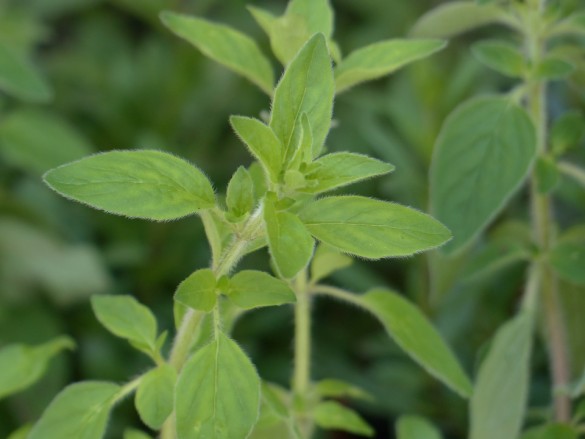
OREGANO OIL
WHAT IS IT? Oregano oil is the distilled essential oil obtained from the Oregano plant (Origanum vulgare), native to the Mediterranean and Western Asia, now cultivated all over the world.
THE CLAIMS: Oregano oil is an effective remedy for a
large number of health issues including respiratory problems, digestive
problems, fungal infections, cold sores, arthritis, and dandruff, and is
an effective insect repellent.
MY COMMENTS: Oregano has been used for thousands of
years, mentioned by Hippocrates and Dioscorides as a common culinary and
medicinal herb that imparted a warming, stimulating energy, uses
included the treatment of convulsion, edema, psoriasis, jaundice,
tonsillitis, oral thrush, and ear infection. Like a number of other
aromatic herbs, Oregano was used as a “strewing herb” in medieval
Europe, thrown on the floor to keep the pestilence at bay, also lending
support to its use as an insecticide. So unlike many of the “superfoods”
I have reviewed in this series, Oregano actually has a strong basis in
traditional medicine.
Oregano is a member of the Laminacea, or mint family, displaying a
unique fingerprint of common essential oil constituents such as
carvacrol and thymol, that are also found in related members of this
family such as Wild Bergamot (Monarda fistulosa) and Thyme (Thymus vulgaris). As
such, if we based the rationale of its use entirely upon its essential
oil, there is nothing particularly special about Oregano that would
necessarily warrant its use over something else like Wild Bergamot or
Thyme. The fact however, that I am only referring to the essential oil
is part of the problem. This is because once separated from the plant
material by distillation, an essential oil is a highly purified plant
extract that can be exceptionally powerful in action. Depending on the
amount of essential oil found in various herbs, an essential oil can
represent an extraction strength that is hundreds and even thousands of
times more powerful than the crude herb. It is for this reason that you
need to be very careful with ingesting almost any essential oil, and,
why almost all of the Oregano oil in the market place is heavily diluted
with some kind of carrier oil. Pure oregano oil, and other purified
essential oils such as Thyme oil, are so powerful than when applied to
the skin they can result in deep, penetrating chemical burns. The
problem is that when you buy your Oregano oil, the bottle doesn’t
necessarily tell you the dilution factor, so you don’t know what you’re
getting. Given the business model, you will probably get less as opposed to more of the essential oil, but that’s not very good either when you need to be concerned about efficacy.
But honestly, you probably don’t need Oregano oil for most
applications if you have good quality oregano herb. It’s super easy to
grow, readily available and abundant, and unlike the essential oil, very
safe – exactly the way nature intended you to use it.
Thanks for reading. If you have any additional questions about other so-called

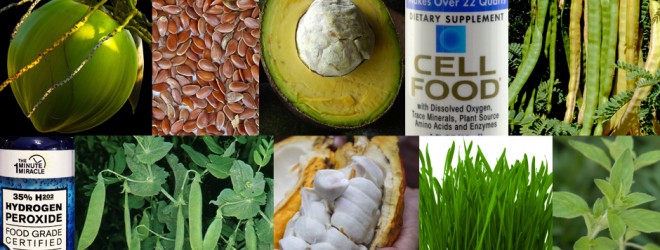

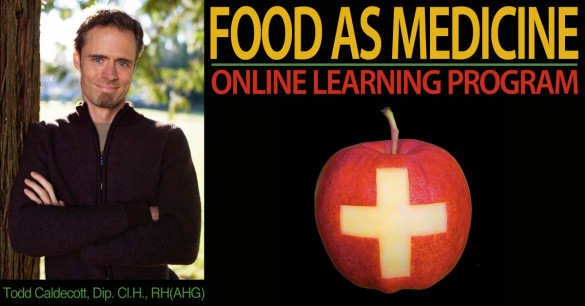
2 comments:
MMS- agree that internal consumption has dangers even with the benefits. My personal experience with MMS is a large painful infected gum on my upper front right tooth. The dentist said the only solution was a $3,500.00 custom root canal after he took an X-Ray
Instead I put 20 drops of MMS and 20 drops of DMSO into a small Water Pik reservoir filled three quarters full with distilled water. The pulse was put at medium low so mixture could soak into the gum. Did this routine once a day for 10 days and now do the protocol twice a month.
Had immediate pain relief with no further symptoms. One year later I had a routine X-Ray and the infected area is totally gone and the gum is normal.
When dealing with MMS do not throw out the baby with the bath water or coconut water that is raw and refrigerated - great way to build electrolytes and promote proper hydration. But regretfully one must consume the the proper coconut water that is raw and refrigerated.
For the exception of MMS, would Todd prefer the individual consume meat, nicotine, caffeine and alcohol rather than the items he slammed with his turd balls?
Maca worked for me. I had no bias towards it. I have had moods swings for awhile and it has virtually eliminated them. Most people who sell Maca only offer it in cooked form V.ry few people eat it raw and it's mostly because they're uninformed and people like the idea of RAW foods. To say it's worthless is ridiculous. It has a long history of use so your article comes off more as a shock value statement than anything with actual substance. What kind of real scientific article calls something bullshit? It's immature and unprofessional but I suppose the people you are trying to attract to your blog are naive enough to believe your negativity because people love to hate, it's EASY! Have fun being a negative Nancy you twit!
Post a Comment